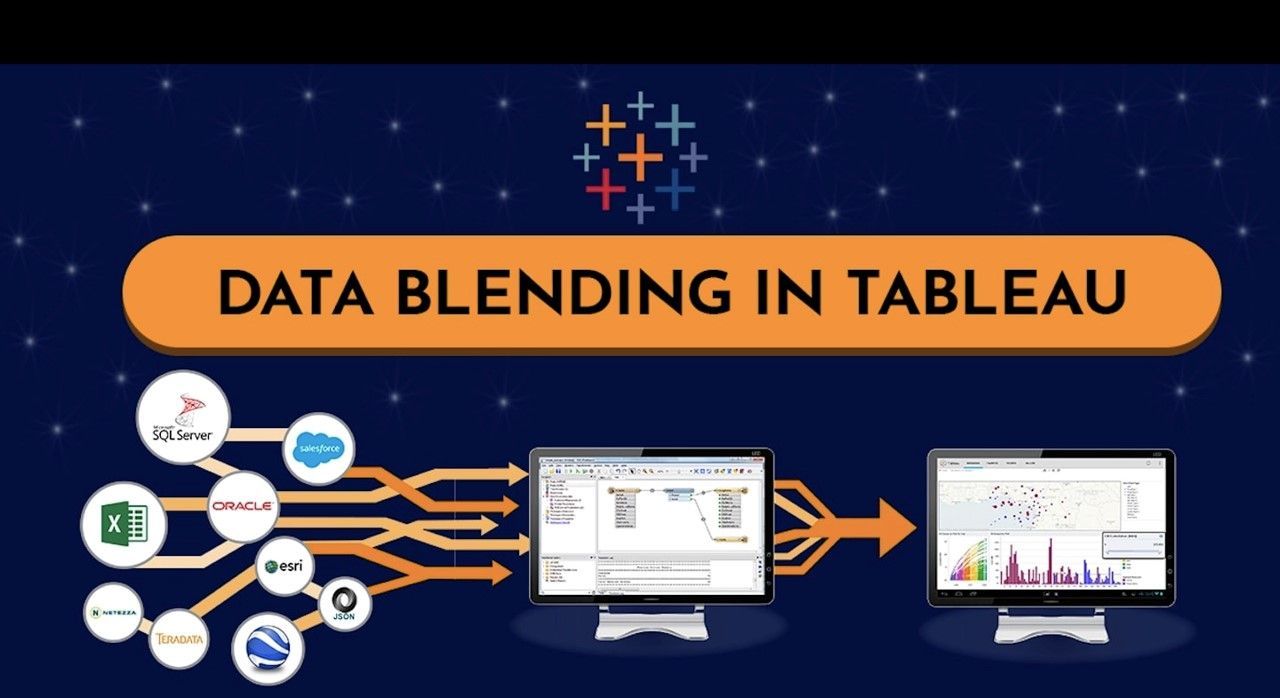
Choosing the Right Approach

Data Blending vs Joining: Unleashing the Power of Tableau
Tableau, a prominent tool for data visualization, provides users with an extensive array of capabilities to explore and derive insights from their data. Within Tableau, there are two prevalent techniques for data processing—data blending and joining.
Understanding Data Blending
Data blending in Tableau refers to the process of combining data from multiple sources or connections into a single view, without altering the original data sources. It allows users to create relationships between data that can coexist in a single visualization. Unlike joining, data blending does not require a common field or key to establish a connection between the datasets.
Data blending is particularly useful when working with different data sources that may not have a direct relationship. For example, you might want to analyze sales data from one database and customer information from another. By blending the data, you can visualize and compare these datasets in a cohesive manner, gaining valuable insights.
The Benefits of Data Blending
- Flexibility: With data blending, you can combine data from various sources without restructuring or modifying the original datasets. This flexibility allows you to work with diverse data types and schemas.
- Real-time Analysis: Data blending enables real-time analysis, as it doesn’t require the data to be loaded into a single database. You can connect to live data sources and blend them on the fly, ensuring up-to-date insights.
- Easy Setup: Blending data in Tableau is straightforward and less complex compared to joining. It doesn’t require matching keys or field structures, making it an accessible option for users with limited technical expertise.
- Intuitive Visualizations: Blended data can be seamlessly integrated into Tableau visualizations, allowing you to create comprehensive and insightful dashboards. You can combine different dimensions and measures, unlocking new perspectives on your data.
Exploring Data Joining
In contrast to data blending, joining in Tableau involves merging or combining data based on a common field or key. This operation creates a new dataset that includes all the columns from the joined tables. Joining allows you to consolidate related data into a unified view for analysis and visualization.
Tableau offers various types of joins, including inner join, left join, right join, and full outer join. These join types determine which records from the joined tables are included in the resulting dataset. Depending on the context and data requirements, you can choose the appropriate join type to align your datasets.
The Advantages of Data Joining
- Data Integration: By joining tables, you can integrate related data fields into a single dataset, eliminating the need for separate sources. This integration simplifies data analysis and enhances the accuracy of insights.
- Merge Complex Structures: Joining is particularly useful when dealing with complex data structures that require different dimensions and measures to be consolidated. It allows you to bring together disparate data elements for a holistic view.
- Aggregation and Filtering: Joining data in Tableau enables you to perform advanced aggregations and filtering based on the joined fields. This flexibility facilitates detailed analysis and dynamic visualizations.
- Enhanced Performance: When working with large datasets, joining can improve performance by reducing the data volume and optimizing queries. It streamlines data retrieval and processing, allowing for faster insights.
Tableau Data Blending vs Joining: Choosing the Right Approach
Both data blending and joining have their strengths and use cases. The choice between these approaches depends on the nature of your data, the desired level of integration, and the specific insights you seek to uncover. Let’s compare the two approaches to help you make an informed decision.
When to Use Data Blending?
Data blending is an ideal choice when:
- You need to analyze disparate data sources without a common field or key.
- Your datasets have different levels of granularity that cannot be easily aligned.
- Real-time insights are crucial, and you want to avoid data duplication or loading into a single database.
- You are working with combinations of structured and unstructured data.
When to Use Data Joining?
Data joining is preferable when:
- You have related datasets that share common fields or keys.
- You want to combine data from multiple sources into a unified dataset for analysis.
- Detailed aggregations and filtering based on common fields are essential for your analysis.
- You are working with structured data sources that can be easily aligned through common keys.